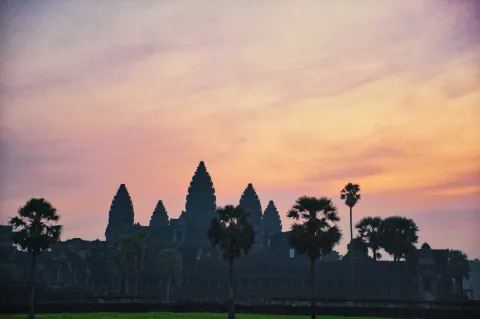News

National Museum of Cambodia
The National Museum of Cambodia (Khmer: សារមន្ទីរជាតិ) is Cambodia's largest museum of cultural history and is the country's leading historical and archaeological museum. It is located in Chey Chumneas, Phnom Penh.
History
George Groslier (1887–1945), historian, curator and author was the motivating force behind much of the revival of interest in traditional Cambodian arts and crafts, and it was he who designed this building that is today ‘traditional Khmer’ architecture. It is perhaps better described as a building enlarged from Cambodian temple prototypes seen on ancient bas-reliefs and reinterpreted through colonial eyes to meet the museum-size requirements.
The foundation stone for the new museum was laid on 15 August 1917. Some two-and-a-half years later, the completed museum was inaugurated during Khmer New Year on 13 April 1920 in the presence of H.M King Sisowath, François-Marius Baudouin, Résident-supérieur, and M. Groslier, director of Cambodian Arts, and Conservator of the museum.
The original design of the building was slightly altered in 1924 with extensions that added wings at either end of the eastern façade that made the building even more imposing.
Control of the National Museum and Arts Administration was ceded by the French to the Cambodians on 9 August 1951 and following Independence in 1953, the then Musée National de Phnom Penh was the subject of bilateral accords. In 1966 Chea Thay Seng was the first Cambodian director of the museum and dean of the newly created Department of Archaeology at the Royal University of Fine Arts. This university that form its foundation as the Ecole des Arts Cambodgiens in 1920 was intimately linked with students, artisans and teachers who worked to preserve Cambodian cultural traditions, can still be found to the rear of the museum.
During the Khmer Rouge regime (from 1975 to 1979), all aspects of Cambodian life including the cultural realm were devastated. The museum, along with the rest of Phnom Penh, was evacuated and abandoned. The museum, closed between 1975 and 1979, and was found in disrepair, its roof rotten and home to a vast colony of bats, the garden overgrown, and the collection in disarray, many objects damaged or stolen. The museum was quickly tidied up and reopened to the public on 13 April 1979. However, many of the museum's employees had lost their lives during the Khmer Rouge regime.


